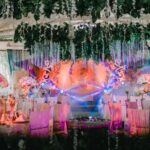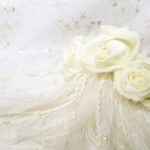Pure cultures low molecular mass RNA fingerprinting pure cul identifies natural assemblages of planktonic photosynthetic sulfur bacteria
Pure Cul data cannot be used to determine if they are useful in understanding the ecology of phototrophic bacteria. It must first be demonstrated that the microorganism isolated is active and abundant in its environment. However, autecological studies are constrained by the inability to reproduce the conditions required for the isolation of such microorganisms in a laboratory. Non-culturing techniques [1,2] have shown that rRNA genes obtained from naturally occurring prokaryotes often differ from those derived from well-characterized, cultivated microorganisms. Therefore, it is difficult to extrapolate physiological data from isolates to natural conditions based on the results of studies. It is therefore necessary to have quick and simple methods that can tell whether the bacteria isolated from pure culture are found in the community where they were isolated.
This problem can be solved by combining molecular techniques with pure cultures and complex natural communities. The genetic fingerprinting technique provides a pattern or fingerprint that allows for comparison between natural microbial communities (NMC) and bacterial culture [8]. Low molecular mass (lmwRNA) RNAs can be electrophoretically analysed using electrophoretic analysis. 5S rRNA (and tRNAs), is a simple fingerprinting technique [9]. It has been used to study community structure [10-12], identify microbial cultures [13], as well as compare isolates and natural communities [14-15]. This method has less resolution power than methods that rely vulture culture on PCR amplification (16S rRNA gene genes] because of the small number of molecules and their short length. These methods may have different biases [17], while the lmwRNA pattern allows for direct estimation of the abundance in situ and requires the least manipulations [9].
Phototrophic sulfur bacteria is a well-studied group of microorganisms that have been studied in both the field and in culture (recent reviews are available at [18,19]). There have been reports of blooms in such populations from an array of environments that contain reduced sulfur compounds and light ([18] and the references therein). These habitats include anaerobic Hypolimnia in stratified lakes and Fjords, coastal lagoons, estuaries and sediments from rice fields. They can also be found in harsh environments like salt and soda lakes or hot sulfur springs. Organms that form planktonic blossoms belong either to the Chromatiaceae, (purple sulfur bacteria), or the Chlorobiaceae, (green sulfur bacteria). Both families are phylogenetically coherent groups [20,21] distantly related to each other (gamma-proteobacteria and green sulfur bacteria, respectively). The majority of laboratory studies were done with selected strains, including Allochromatium vinosum and Thiocapsa Roseopersicina. There is extensive knowledge about their physiological properties. However, microscopic observations suggest that these organisms might not be representative for dominant natural communities.
We recently established a database that allowed us to quickly identify different pure cultures by using lmwRNA bands from field isolates as well as reference strains of purple or green sulfur bacteria. We use the same approach in this work to compare natural samples taken from anaerobic straified lakes with those in our lmwRNA database. These natural samples show a strong dominance by a few phototrophic bacteria species [23]. It is possible to determine if the strains in culture are ecologically relevant organisms through comparing lmwRNA patterns. This allows us to identify good chihiro fujisaki candidates for physiological studies (those that are simultaneously capable of growing in pure culture and abundantly in nature), and extrapolate their physiological characterization to natural conditions. Materials and methods
Environments studied. Sample procedure and analysis
All of the systems were sampled in northeastern Spain. The Banyoles Karstic Area (42deg8’N, 2deg45’E) contains the lakes Ciso, Vilar, and basins IV, VI of Lake Banyoles. These systems and the microbial communities that inhabit them have been thoroughly studied (reviews can be found at [24,25]. Lake La Cruz is part of the Cuenca Karstic System (39deg59’N, 1deg52’W). The biological and physicochemical properties of this lagoon were extensively described ([26] as well as references therein). La Trinitat solar saltterns can be found in the Ebro Delta (40deg35’N, 0deg41’E). They are composed of several ponds with increasing salinity that are used for commercial salt production. This system was included in our analysis to check the effectiveness of fingerprinting. Two shallow ponds of different salinities were used to compare the results: Trinitat III, which is 15% salty, and Trinitat V, which is 22% salinity. The analysis also included a marine sample taken off the coast of Barcelona. These systems were sampled as described elsewhere [27]. A portable multisensor probe (Hydrolab DS-3 Hydrolab Instruments) was used to measure the depth profiles of water temperature and conductivity. As described elsewhere, water samples were collected from various depths with a polyvinylchloride cone connected via tubing to a battery-driven pump. The methylene pure cul blue colorimetric method was used to measure sulfide in 10-ml subsamples. These were fixed in situ with 100 ml 10 NaOH and Znacetate, to reach a final concentration at 0.1M [28]. Samples were fixed in 4% formaldehyde (v/v), and stained with DAPI [29] with an Olympus BH epifluorescence microscope. Cell counts were performed using these samples. Pfennig [30] and Truper [30] were the authors who identified morphologically distinct phototrophic bacteria. Some taxonomically important characters such as motility or the presence of gas vasicles were observed using phase-contrast microscopy and live samples. The phenotype of the nearest related reference strain was used to identify field isolates. This is the most important distinction for the majority of purple sulfur bacteria.
Plastic containers were filled with 1-10 l water. They were then kept on ice in the dark until they were ready for RNA analysis. The samples were concentrated by a refrigerated centrifuge at 8000xg (Sorvall Inst. Cell pellets were frozen at -80°C until further use.
Growth and isolation of the strains
Phototrophic bacteria was isolated from individual colonies using the agar shaking method [30] after either dilution series (see Section 3) or direct enrichments (see section 3) in Lake Ciso (summer 1993), Lake Banyoles, and Lake La Cruz. Pfennig & Truper [30] prepared the growth medium. The temperature of the chamber was 22 degrees Celsius and the culture conditions were 40 mE per m-2 s-1. To increase cell pure cul concentrations, a neutralized solution of carbonate or sulfide was added repeatedly. Under phase-contrast microscopy, the purity of the cultures was confirmed. The cells were collected by centrifugation, and kept at -80°C until the lmwRNA analysis was performed.




